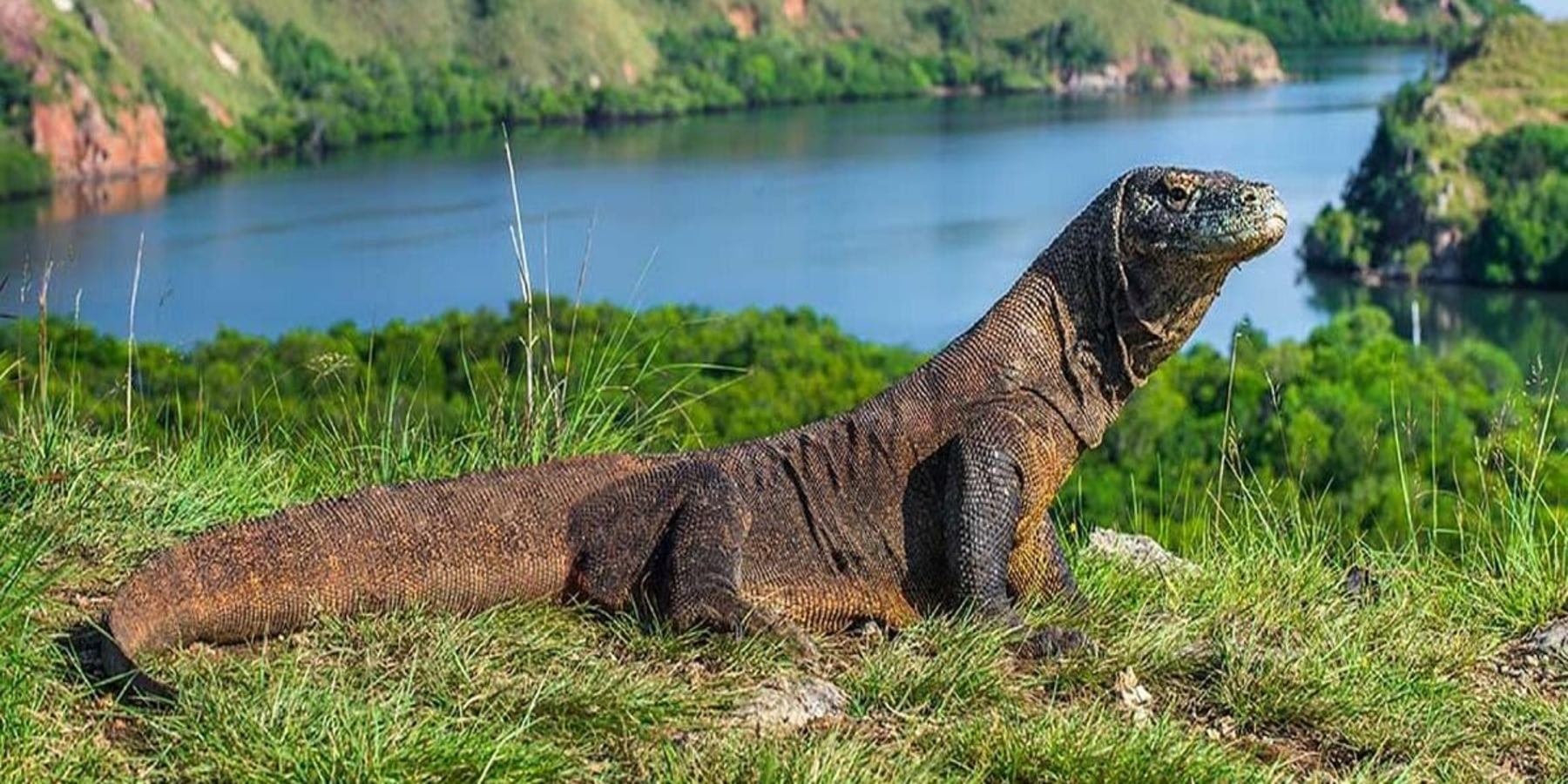
Komodo National Park is located in the center of the Indonesian archipelago, between Sumbawa and Flores, which comprises three major islands; Komodo Island, Rinca Island and Padar Island. This Park was established in 1980 and also was designated as Man & Biosphere Reserve in 1977 by UNESCO. Komodo National Park demonstrated exceptional natural beauty and contains the large majority of the only areas in the world in which a wild population of Komodo dragon lizard still exist. Based on these values, UNESCO was designated this Park as a World Heritage Site in 1991. In 2009 the Park became one of the Official Finalist of New 7 Wonders of Nature.
Komodo National Park covers 1.733 square kilometres of rugged hillsides and dry vegetation that highly contrast with the sandy beaches and the blue coral-rich waters. There are more than 250 plants mixed of Asian and Australian species in this Park; some of these grasses and trees are fire-adapted. The Park also an inhabitant of more than 30 mammals, 130 birds, 1000 fishes, 380 corals and numerous other invertebrate animals. Most people live in and around Komodo National Park are fisherman which depend on the Park’s waters. There are three villages in the Park; Komodo Village on Komodo Island, Rinca Village on Rinca Island and Papagarang Village on Papagarang Island, with more than 4000 people.
The Dragons
Komodo Dragons (Varanus Komodoensis) could only be found in Komodo, Rinca, Gili Motang and Nusa Kode in Komodo National Park. A small population of the dragons also could be found in western and northern Flores. Komodo dragons are carnivorous, cannibal, scavenger and top predator. The main prey of the dragons is Timor deer. They also feed on water buffaloes, wild boars, wild horses and long-tailed macaques. The juvenile dragons feed on small lizards, rats, insects and other small animals. The mating season of the dragons occurs around July – August. About two months later, the female dragons will lay the eggs. Around February – April, the juvenile dragon's hatch.
Loh Liang on Komodo Island
Loh Liang is the visitor gateway on Komodo Island. It provides an opportunity for various activities for visitors, such as:
Komodo dragon and other wildlife watching include Timor deer, monkey, wild boar, and water buffalo.
Bird watching such as Sulphur-crested cockatoo (Cacatua sulphurea), Orange-footed scrub fowl (Megapodius reinwardt), Sprangled drongo (Dicrurus densus), Green imperial pigeon (Duculaaenea) and Friarbird (Philemon buceroides).
Short Trekking about 1 hour
Medium Trekking about 1 hour 30 minutes
Long Trekking 2 hours
Adventure Trekking
Photographing and video shooting
Nearby attractions:
Diving and snorkelling at Pink beach
Thousands of flying foxes on Kalong Island close to Komodo Village
Loh Buaya on Rinca Island
Loh Buaya is the visitor gateway on Rinca Island. It provides an opportunity for various activities for visitors, such as:
Komodo dragon and other wildlife watching include water buffalo, long-tailed macaque, Timor deer, wild boar, monkey and wild horse.
Short Trekking about 1 hour
Medium Trekking about 1 hour 30 minutes
Long Trekking 2 hours
Adventure Trekking
Photographing and video shooting
Nearby attractions:
Diving and snorkeling at Wae Nilu
Flying foxes on Kalong Island close to Rinca Village
Batu Balok close to Rinca Village
Diving and Snorkelling Sites
Komodo National Park waters located on the equator get enough sunlight with the strong current and low sedimentation, providing a lot of plankton and oxygen needed for coral and many other marine organisms. This high level of nutrient significantly creates the richness of marine biodiversity, includes more than 1000 species of fishes, 380 corals and 8 species of seaweed. The Park also become a habitat and migratory route for about 24 species of whales and dolphins. Dugongs, whale sharks, manta rays, sea turtles, Napoleon wrasses, giant clams and triton also could be found here. This combination offers tremendous sites for diving and snorkelling opportunities with a mixed of biodiversity and challenge. There are more than 30 dive sites in the Park.
Accessibility
Access from Bali and Jakarta by Airplane:
Direct flights from Bali to Labuan Bajo for around 1 hour.
Direct flights from Jakarta to Labuan Bajo around 2 hours 30 minutes.
Access from Labuan Bajo to Komodo National Park
By Fast Boat:
Labuan Bajo to Rinca Island about 45 minutes
Labuan Bajo to Padar Island about 1 hour
Labuan Bajo to Komodo Island about 1 hour 30 minutes
By Local Boat:
Labuan Bajo to Rinca Island about 2 hours
Labuan Bajo to Padar Island about 3 hours
Labuan Bajo to Komodo Island about 4 hours

